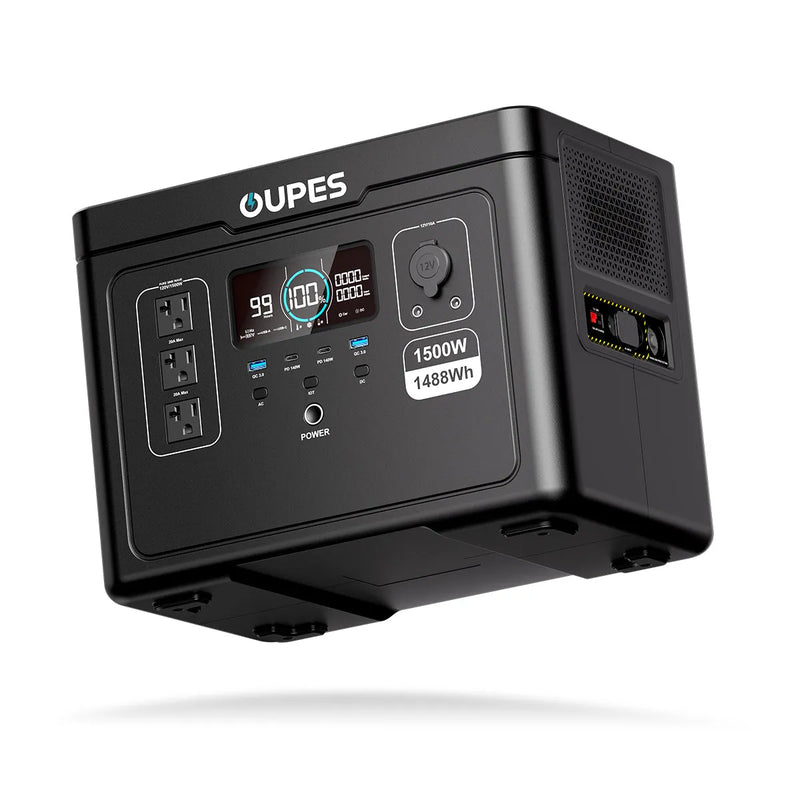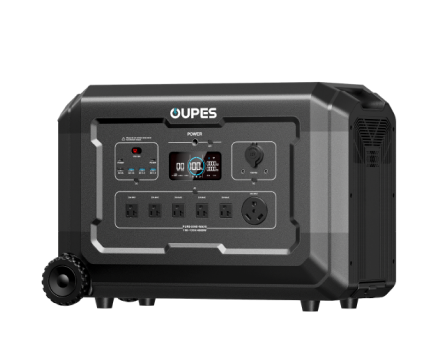
When Hurricane Fiona left Puerto Rico in darkness for weeks, households with solar panels and generators humming in harmony became beacons of resilience—freezers running, medical equipment powered, and phones charged while neighbors scrambled for fuel. This real-world scenario reveals why pairing solar panels with generators creates the ultimate energy solution: renewable efficiency meets unstoppable reliability. As climate volatility intensifies and energy demands grow, these complementary technologies form partnerships more powerful than their individual capabilities.
The synergy between solar and generators transcends simple backup planning—it's about creating intelligent energy ecosystems that adapt to weather, usage patterns, and budget constraints. Whether you're an off-grid adventurer, an emergency-prepared homeowner, or an eco-conscious family reducing carbon footprints, integrated kits deliver unprecedented control over your power destiny. This guide explores how these duos work in concert, where they excel, and how to configure your perfect energy match.
The Complementary Power Dynamic: Solar and Generators Explained
Solar panels and generators form a symbiotic relationship that overcomes each technology's limitations. Solar arrays generate clean electricity during daylight hours but stall at night and during cloudy periods. Generators provide instant, weatherproof power but rely on finite fuel and emit pollutants. When integrated through hybrid controllers, solar becomes the primary energy source—quietly charging batteries and powering daytime loads—while the generator automatically activates only when needed: during extended storms, high-demand surges, or when battery reserves dip below user-defined thresholds.
Modern integration achieves seamless transitions that are imperceptible to connected devices. Advanced systems like EcoFlow's Smart Generator use wireless communication; solar panels charge batteries until they reach 20% capacity, then the generator starts for precisely 45 minutes to replenish to 80%, minimizing fuel consumption. This contrasts with traditional setups where generators run continuously during outages. The operational harmony extends to maintenance cycles—generators self-test monthly when solar production is high, ensuring reliability without wasting fuel. For remote cabins, this dynamic can reduce generator runtime from 24/7 to just 1-2 hours daily.
Scalability defines these partnerships. Starter kits (like Jackery Solar Generator 1000 + Companion 1000W Gas Generator) suit weekend camping, while whole-home systems integrate 10kW solar arrays with propane standby generators. Critical is matching capacities: solar input must cover 70% of daily needs to justify the hybrid approach. The true magic emerges during multi-day emergencies—solar handles daytime refrigeration and communications, while the generator briefly supports nighttime heating and medical equipment. This dance between sustainability and brute-force power creates resilience impossible with either technology alone.
Hybrid System Configurations: Matching Kits to Your Needs
Selecting the right hybrid configuration depends on three factors: energy demands, location, and autonomy requirements. For recreational vehicles, all-in-one kits like Bluetti AC200P + B230 battery + 200W solar + gas generator input offer plug-and-play simplicity. These maintain essential appliances (fridge, lights, vent fan) indefinitely, using solar for 90% of operation with the generator as cloudy-day insurance. Home backup systems require more customization; pairing 5kW solar arrays with 12kW Generac generators through transfer switches can sustain central air conditioning during outages—a capability pure solar rarely achieves cost-effectively.
Component compatibility is paramount. Solar panels must match charge controller specifications—over-paneling (installing more wattage than rated) boosts low-light performance but requires MPPT controllers to prevent damage. Generator integration demands automatic start modules for inverter generators; conventional generators can damage electronics without voltage stabilization. Critical connections include AC coupling for grid-tied systems or DC coupling for off-grid efficiency. Safety components like generator exhaust diverters and arc-fault breakers are non-negotiable for permanent installations.
Geographic customization tailors systems to local conditions. In sun-drenched Arizona, 80% solar contribution is achievable with 1kW panels per 1kWh daily usage. Cloudy Pacific Northwest setups may require 2kW panels for the same output, making generator supplementation more frequent. Snow-prone regions need tilt mounts for panels and enclosures for generators. Coastal areas demand corrosion-resistant components. Professional installers use tools like Aurora Solar to simulate production, but DIYers can estimate needs: calculate daily watt-hour consumption, divide by local peak sun hours for solar array size, then size the generator to cover your largest appliance plus 20%.
Operational Advantages: Beyond Simple Backup Power
The financial benefits of paired systems emerge dramatically over time. While a 10kW solar + 12kW generator installation costs $22,000-$35,000 versus $18,000 for generator-only, the hybrid pays back through multiple channels. Solar eliminates 70-90% of generator fuel costs—saving $800 annually for average outage patterns. Net metering credits from excess solar slash grid electricity bills year-round. Maintenance decreases as generators accumulate fewer runtime hours; 50-hour annual use versus 200+ hours in generator-only setups extends engine life by years. Tax incentives like the U.S. federal ITC cover 30% of solar components, while some states offer hybrid-system rebates.
Environmental impacts transform with integration. A generator running 200 hours annually emits 1.5 tons of CO2—halved when solar handles half that load. Noise pollution drops from constant 70-decibel generator drone to occasional operation. Smart systems like Kohler's Energy Hub optimize eco-efficiency: solar charges batteries first, then powers loads directly when batteries are full, with the generator only engaging when solar can't meet demand. This reduces runtime by up to 80% compared to traditional setups.
Operational intelligence defines modern hybrids. Systems like Generac PWRcell monitor weather forecasts, pre-charging batteries before storms using grid power. When outages occur, solar becomes the primary source until battery reserves deplete, then the generator automatically starts. As sunlight returns, the generator shuts off and solar replenishes batteries. Users control parameters via apps—setting fuel-saving modes or prioritizing medical equipment. This automation creates stress-free resilience, especially valuable for elderly users or those with critical health devices.
Deployment Scenarios: Where Hybrid Kits Shine Brightest
For disaster resilience, hybrid systems prove indispensable. During California's wildfire blackouts, homeowners with Tesla Powerwall + solar + generator backups maintained power for weeks—solar handled daytime needs while the generator briefly supported nighttime HVAC cycles. Unlike solar-only setups that fail during smoke-blocked sun, or generator-only systems halted by fuel shortages, hybrids provide assured power continuity. Hospitals increasingly deploy mobile versions; the Johns Hopkins emergency response trailer uses 4.8kW solar + 7kW diesel generator to run ventilators indefinitely.
Off-grid living achieves new sustainability heights with these pairings. Alaska homesteaders combine 10kW solar arrays with propane generators—solar powers summer operations while the generator supplements during winter's limited daylight. The key is fuel diversification; propane stores indefinitely unlike gasoline, and solar reduces consumption to 1-2 tanks annually. RV travelers use scaled-down versions; compact 400W solar panels keep batteries charged for lights and phones, while a 2000W inverter generator briefly runs air conditioners during peak heat—extending campground stays without noisy constant operation.
Commercial applications leverage hybrids for cost stability. Farm irrigation systems pair solar trackers with biodiesel generators—solar powers pumps during sun hours, while the generator covers nighttime watering without grid dependency. Cellular towers in remote locations run primarily on solar with generators as backup, reducing site visits from weekly fuel deliveries to quarterly maintenance. Even urban businesses install micro-hybrids; Brooklyn bakeries use rooftop solar + natural gas generators to avoid peak-demand utility charges, saving $400 monthly.
Future Evolution: Smart Integration and Sustainable Fuels
Artificial intelligence is revolutionizing hybrid management. Next-gen controllers like Schneider Electric's Conext platform use machine learning to predict energy needs based on historical usage and weather patterns. These systems pre-charge batteries before predicted storms and coordinate generator runtime with solar forecasts—a cloudy afternoon might trigger an extra generator cycle to prepare for a sunless tomorrow. Grid-interactive models will soon participate in virtual power plants, selling excess solar to utilities during high-demand periods while strategically using generators when buyback rates peak.
Fuel innovations promise cleaner hybrid operation. Hydrogen-ready generators entering the market (like EODev's GEH2) emit only water vapor when paired with solar-powered electrolyzers. Renewable propane—synthesized from plant matter—offers carbon-neutral backup. Solar panel advancements include bifacial models harvesting reflected light, boosting output by 25% when mounted above generators. Solid-state batteries emerging post-2027 will triple storage capacity, reducing generator dependence to near-zero.
Integration breakthroughs simplify adoption. All-in-one hybrid units like the Delta Pro Ultra integrate solar inputs, battery storage, and generator connectivity in a single cabinet with plug-and-play wiring. Vehicle-to-home (V2H) compatibility allows electric cars to function as generator substitutes—Ford F-150 Lightning can power homes for three days when solar replenishes its battery. These converging technologies will make hybrid systems smaller, smarter, and more accessible—transforming them from premium solutions to mainstream energy foundations.
Solar panel and generator kits represent the pinnacle of practical energy wisdom—harnessing the sun's abundance while maintaining an iron-clad backup for when nature falters. Their synergy delivers what neither can achieve alone: true energy independence that adapts to storms, seasons, and unexpected demands without compromise. The financial equation increasingly favors hybrids, with solar reducing generator costs while generators ensure solar investments deliver during critical moments.
As technology advances, these partnerships will become more intuitive and sustainable, blurring the lines between primary and backup power. Whether preparing for climate disruptions, living off-grid, or simply seeking control over your energy destiny, integrated solar-generator systems offer a resilient path forward—where clean energy and reliable power aren't competing choices, but perfect partners lighting the way to energy confidence.




























